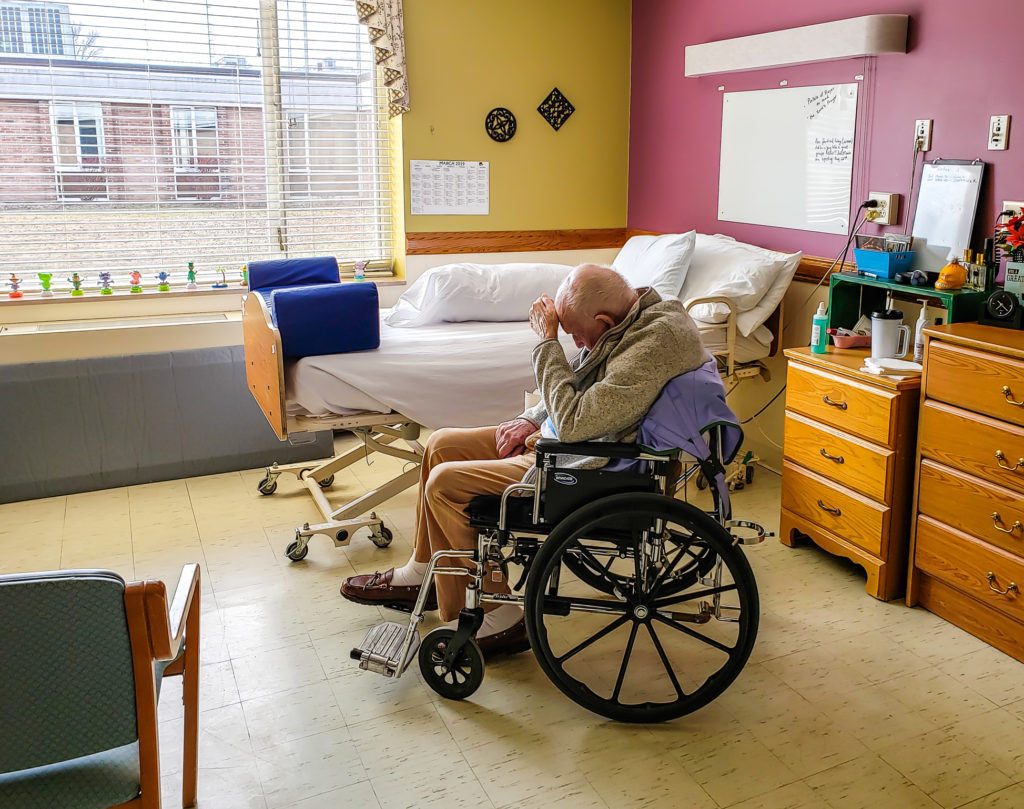People with Dementia feel pain, just like everyone else. As Dementia progresses, the person’s language skills may change, making it very difficult for them to communicate with others when they are in pain. This can cause their pain to go undetected and untreated.

Pain scale
An international team of physicians, nurses, physiotherapists, epidemiologists, and psychologists has developed an observational pain assessment scale for people with cognitive impairments, especially Dementia: The Pain Assessment in Impaired Cognition (PAIC 15) scale. The PAIC 15 scale contains a total of 15 behavioral descriptors, with 5 behavioral descriptors for each behavioral category of:
- Facial expressions, such as “frowning” and “narrowing the eyes”.
- Body movements like “restlessness” and “guarding”.
- Vocalizations, for example, “groaning” and “shouting”
People with Dementia, are often limited in their ability to tell about theirpain. Because of this, pain is often overlooked and remains untreated.
Everyone experiences pain differently
The question is: How can we assess pain in people who are unable to communicate their suffering?
When pain can no longer be reliably communicated via self-report, the observation of pain-typical behaviors is particularly important.
A person’s self-report is the most accurate measure of pain.
You may be able to find out if the person is in pain by asking direct simple questions such as “Are you in pain?”, “Is it sore? or “Does it hurt?”. It is important to remember that a person with advanced Dementia may not be able to answer your questions verbally.

Pay attention
If the person is having a hard time using words to tell you how they feel, it is important to be aware of non-verbal signs of pain and distress.
Since we all express pain differently, it is important to pay attention to any changes in the person’s behavior. They may start using behaviors as a way of communication. Some of the behaviors may include becoming agitated or withdrawing from others.
When the pain goes unnoticed, the person with Dementia may feel significant distress for a prolonged period of time. Pain should be assessed routinely and should be considered as a possible cause of any change in the person’s behavior. Often times, treating the underlying pain lowers or diminishes behaviors.
People with Dementia are at a higher risk of falling or injuring themselves, both of which can be painful. When the person sits or lies in the same spot for long hours without moving, the risk for constipation, joint stiffness, pressures sores, and muscle contraction increases- all of which can cause severe pain and discomfort. In addition, someone with Dementia may not remember how they hurt themselves or why they are in pain, adding to the difficulty of trying to communicate their pain to others.
During later stages of Dementia, a person loses many of their verbal skills. They can’t remember the correct word they want to use and by the time they think of the word, they’ve forgotten the pain. The short-term memory that they do have may last no longer than a few seconds. Sometimes they forget they are in pain before they remember how to craft a sentence to let someone know.
Just because they don’t tell us they are in pain, doesn’t mean they don’t suffer pain.
Look for clues
To take care of a person with middle to the late stage of any sort of Dementia, we need to look for other “non-verbal” clues if we think they may be in pain.
Is the person limping? They may have a sprained ankle, injured knee, etc.
Do they moan or groan or make other sounds of pain when they eat, walk, or go to the bathroom? They may have a bad tooth, ill-fitting dentures, constipated, etc.
Do they clench their teeth or clamp their jaw at intervals when they move, then suddenly relax when they reach a new position? That could mean a sharp pain or pulled muscle that relaxes when they shift their position.
And if their behavior is suddenly different; do they cry a lot, are they agitated and irritable much more than usual?

Ask for help
If you are a caregiver or a family member, and the person with Dementia shows any of these signs or symptoms, they may be in pain. Try to investigate further and judge the severity of their symptoms. Often, a family physician will allow a call to his/her office. Or a phone consult where you can explain the behavior of your loved one. Meanwhile, keep him or her as comfortable as you can.
How to use the PAIC 15 scale
When it’s your profession to work with people with Dementia you can use the PAIC 15 scale to assess pain in people with Dementia. It is recommended to have an observation time of at least 3 minutes. You do not only observe the person in a resting situation but especially during activities of daily living (e.g. getting washed, getting mobilized).
PAIC15 has developed an E-training module. The E-training is free and takes about 30 – 45 minutes.

When you need more information or tips don’t hesitate to contact us.
